Abstract
Four pigeons were exposed to independent concurrent variable-interval 20-second variable-interval 60-second schedules of reinforcement. A transparent partition was inserted midway between the two response keys. The length of the partition was systematically manipulated. Increasing partition length produced a decrease in changeover rate in Experiment 1. Over-matching was observed with a partition length of 20 centimeters. In Experiment 2 a four-second limited hold was added to the schedules. Increasing partition length produced a decrease in changeover rate that exceeded the decrease observed in Experiment 1. This manipulation produced nearly exclusive choice of the variable-interval 20-second component. The present results, together with results obtained in related research, suggest that deviation from matching is a function of procedural variables that determine the consequences of a changeover response.
Keywords: concurrent schedules, matching, overmatching, changeover delay, key peck, pigeons
Full text
PDF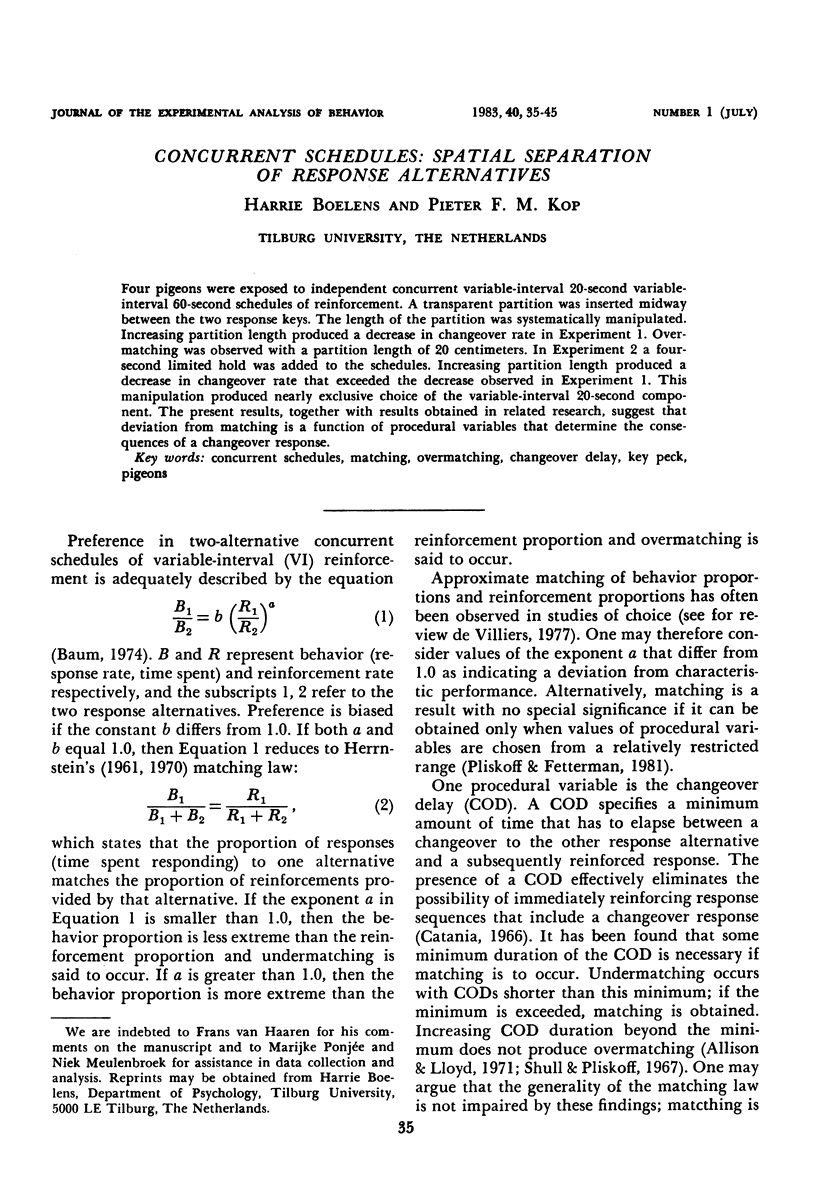
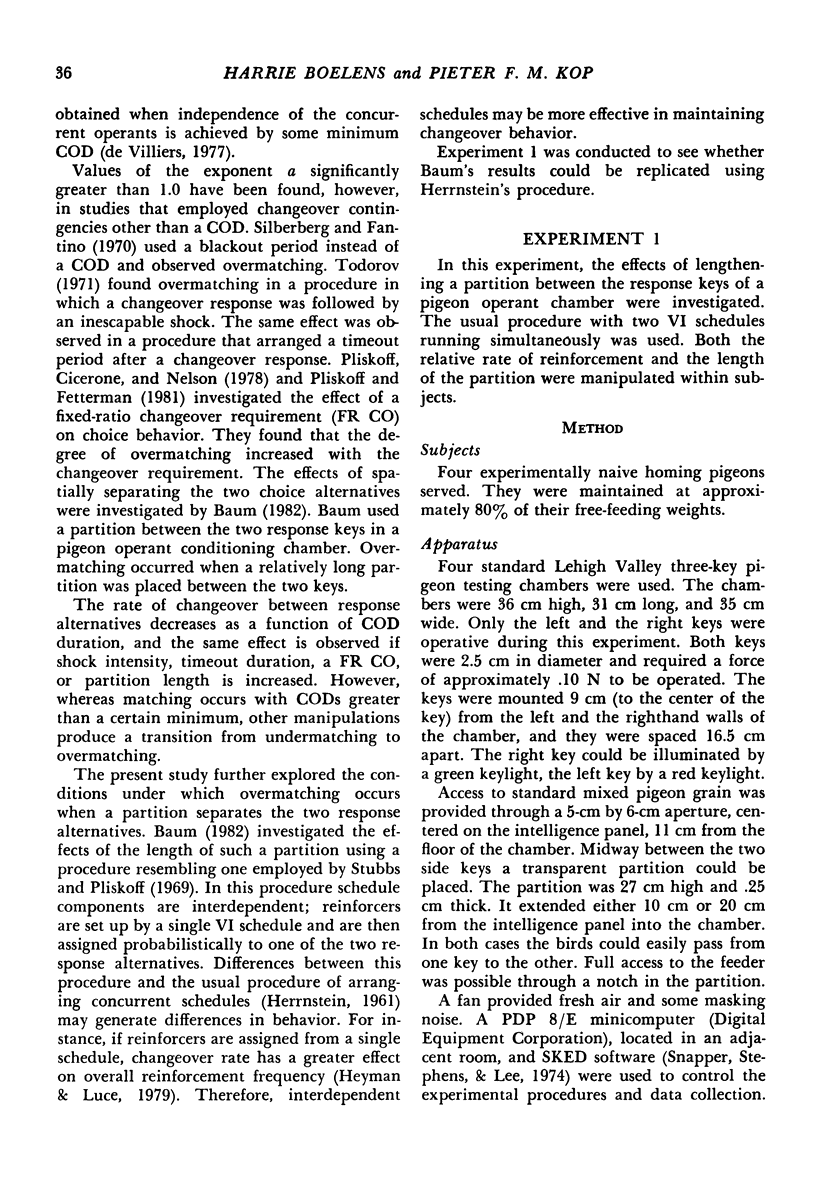
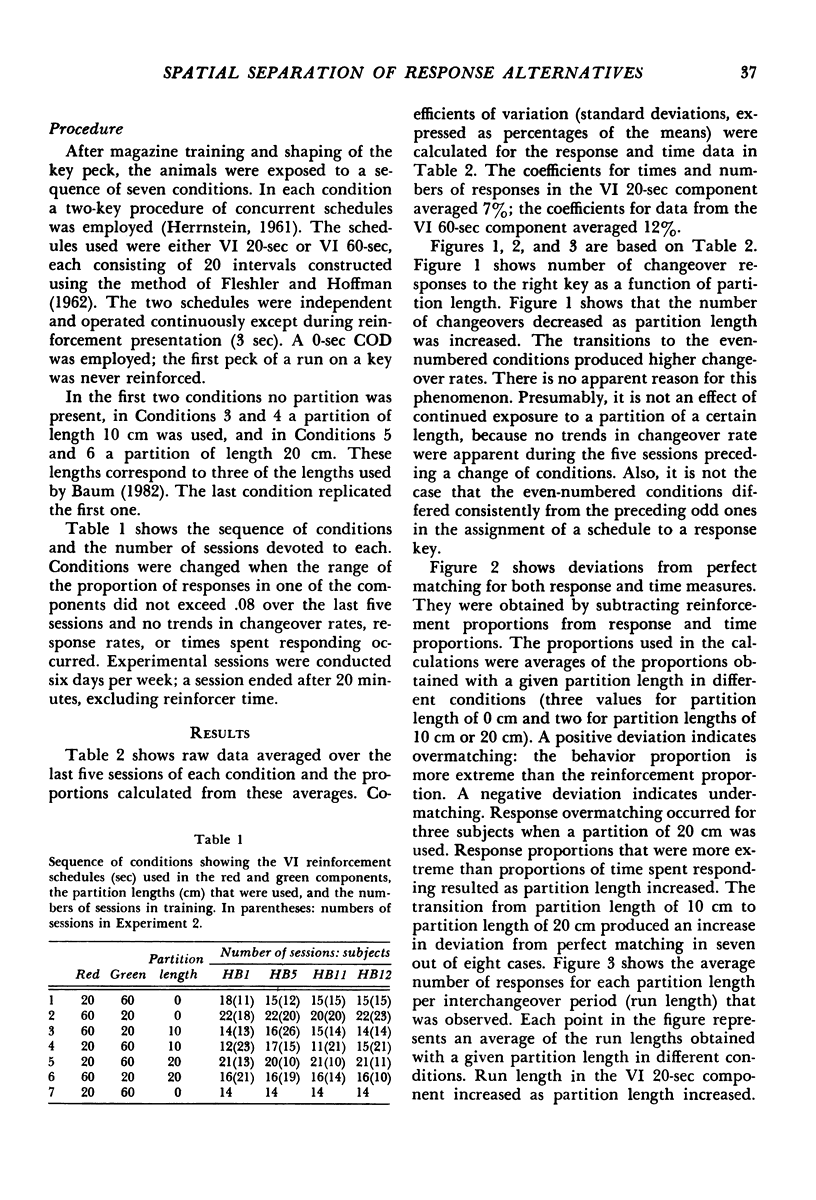
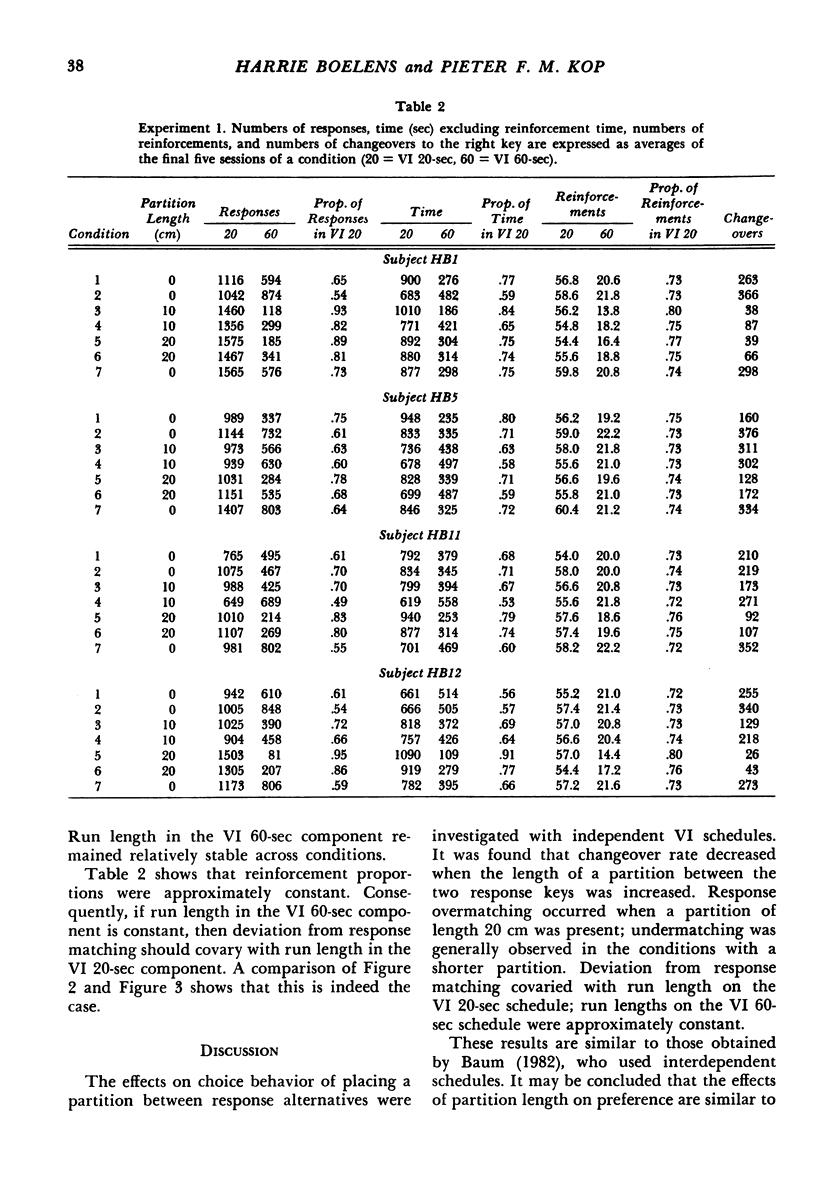
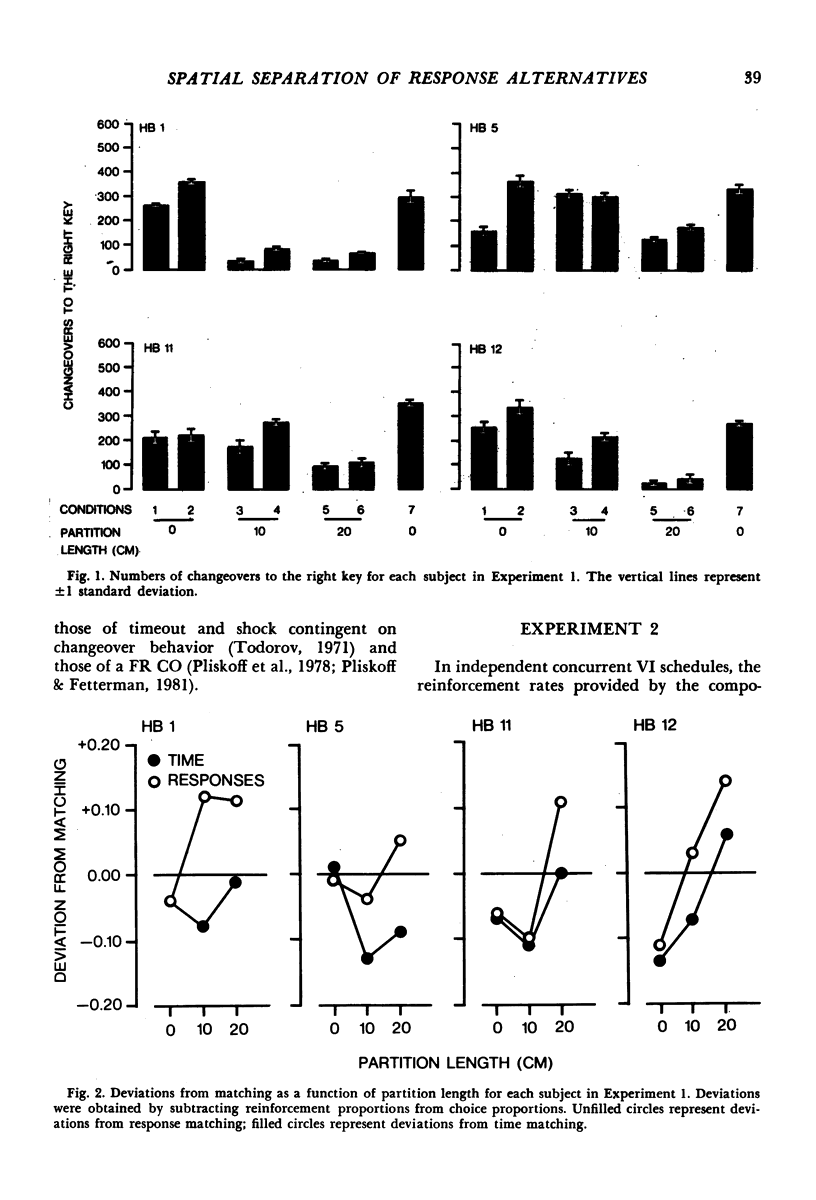
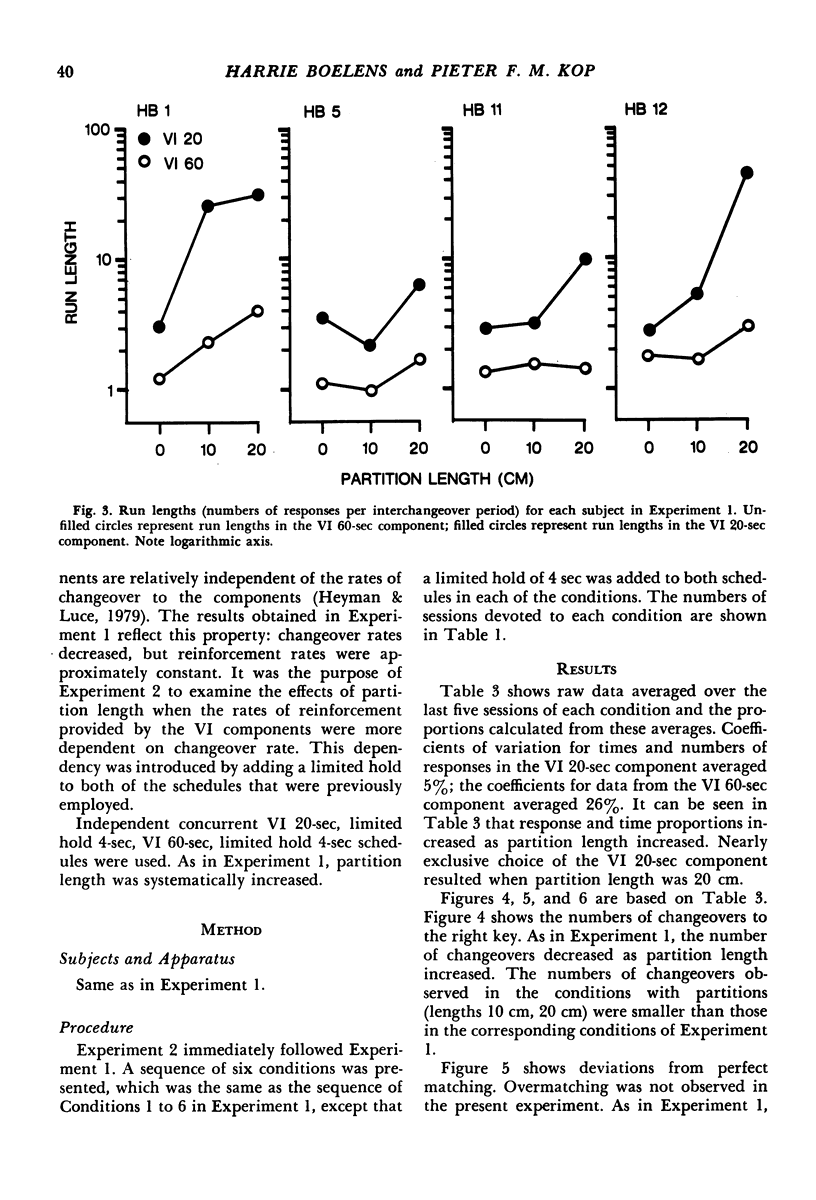
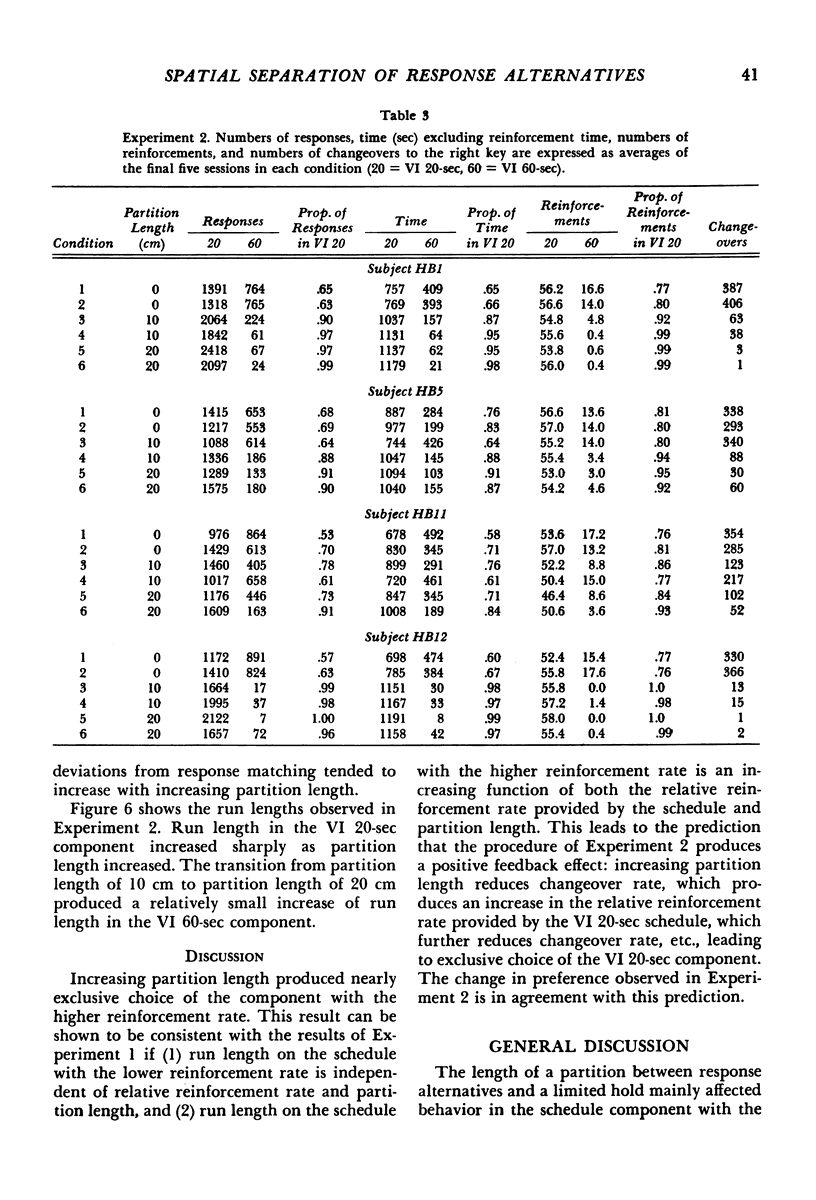
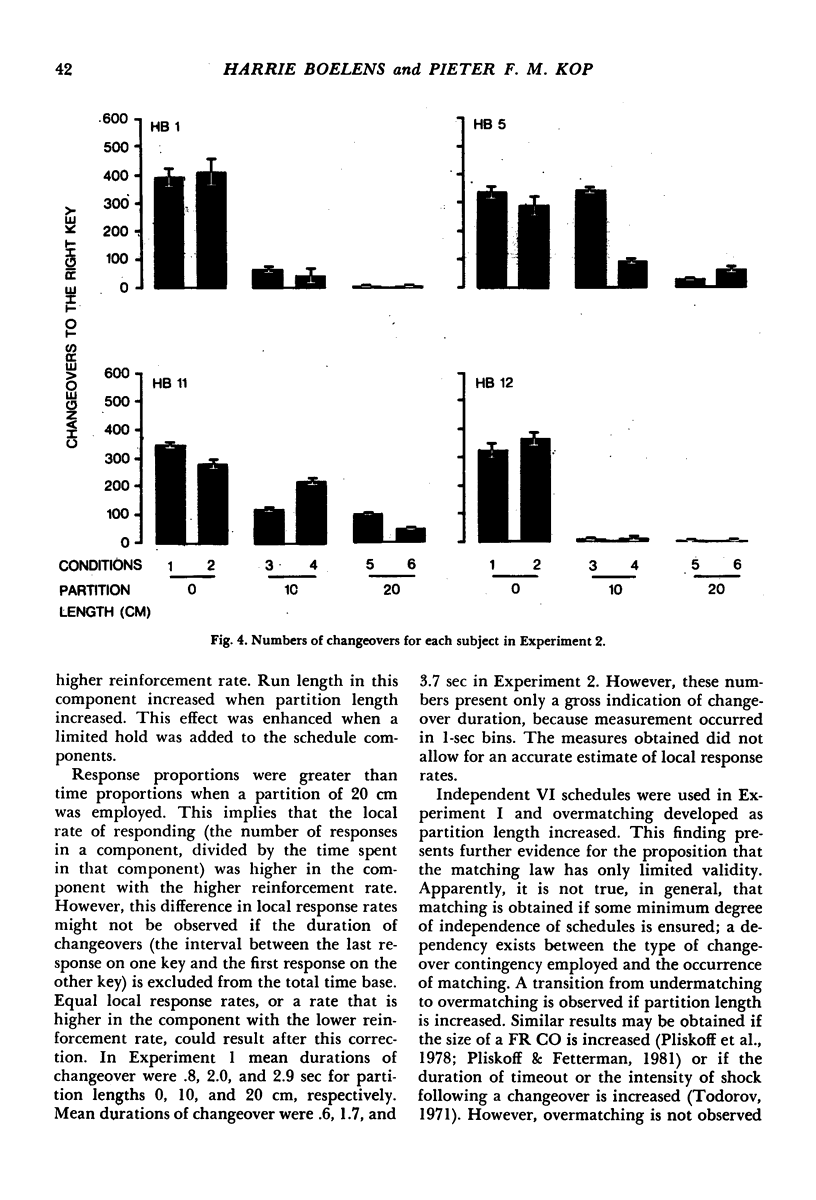
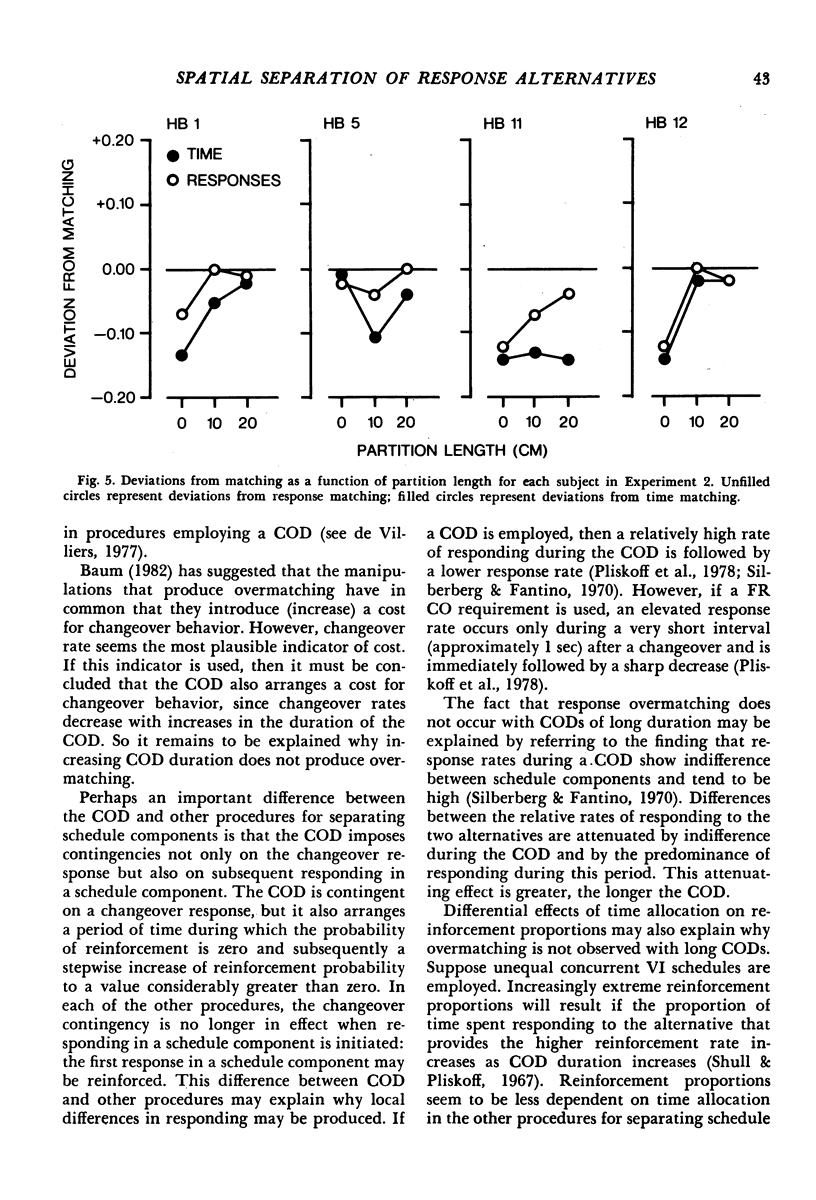
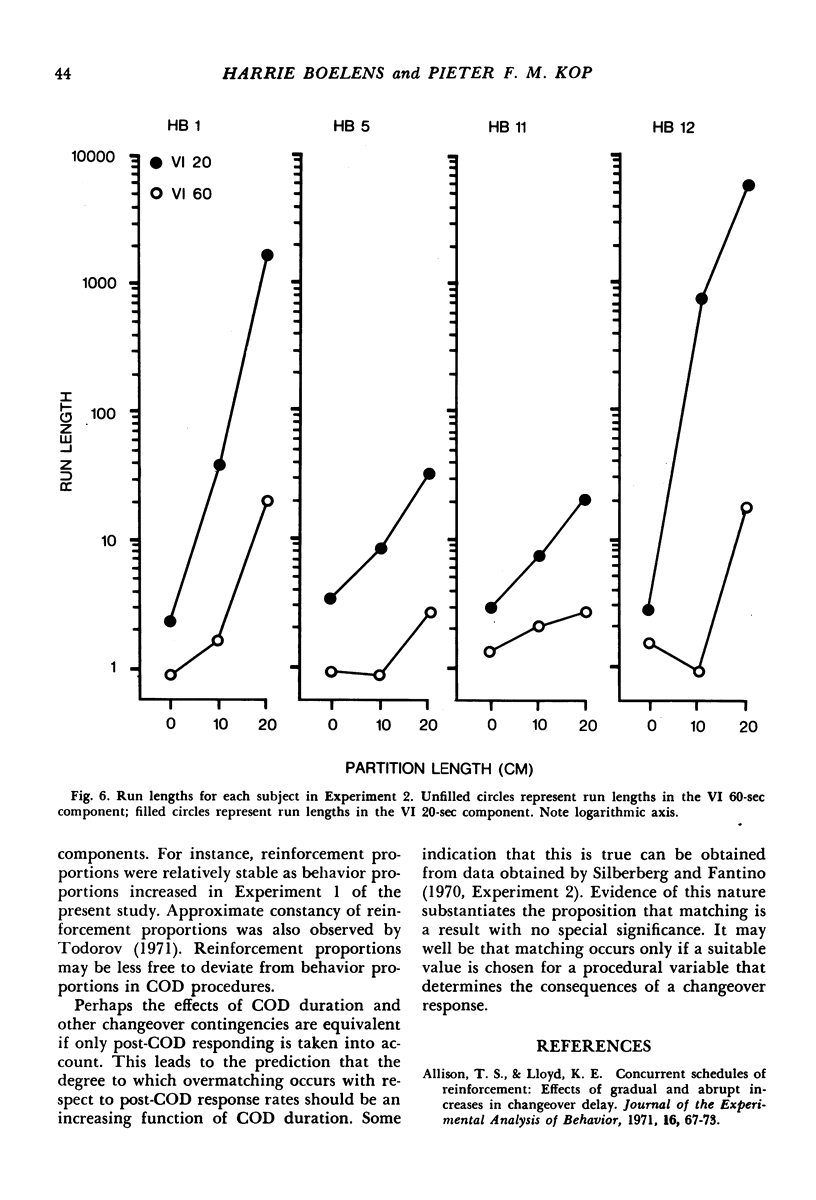
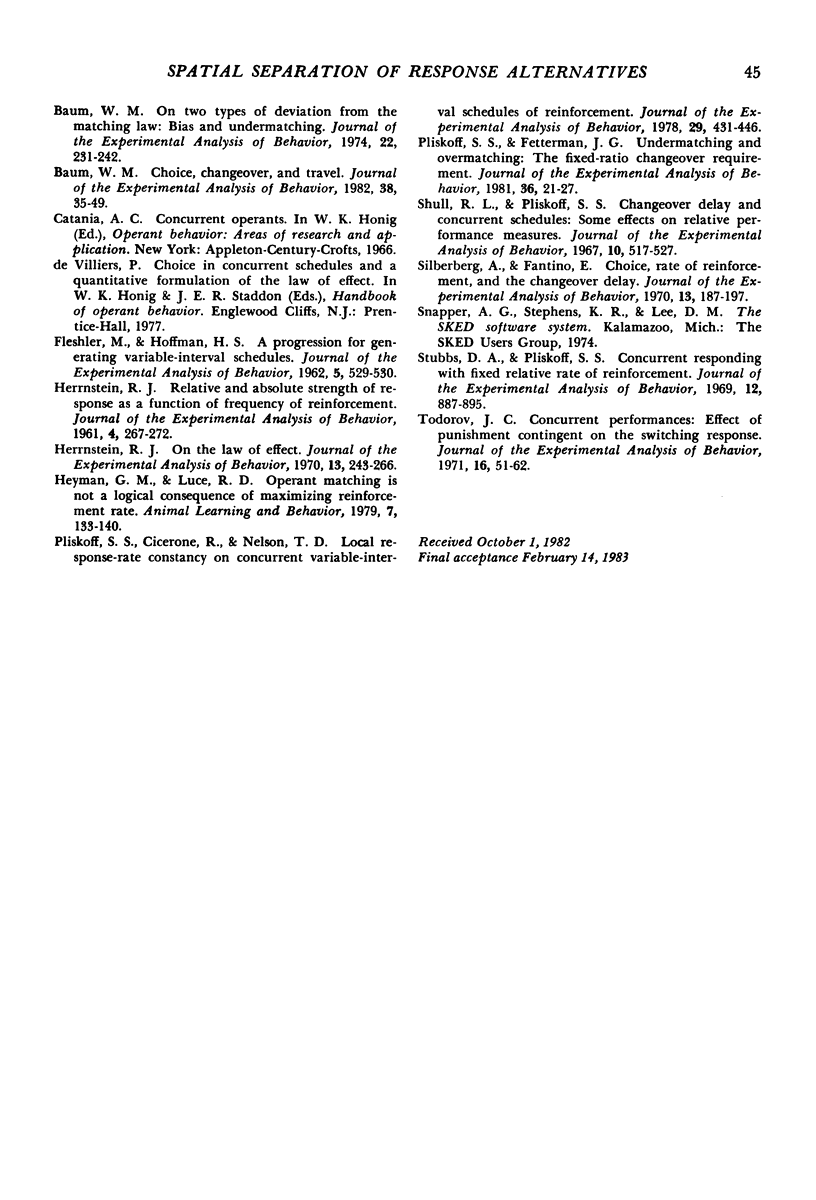
Selected References
These references are in PubMed. This may not be the complete list of references from this article.
- Allison T. S., Lloyd K. E. Concurrent schedules of reinforcement: effects of gradual and abrupt increases in changeover delay. J Exp Anal Behav. 1971 Jul;16(1):67–73. doi: 10.1901/jeab.1971.16-67. [DOI] [PMC free article] [PubMed] [Google Scholar]
- Baum W. M. Choice, changeover, and travel. J Exp Anal Behav. 1982 Jul;38(1):35–49. doi: 10.1901/jeab.1982.38-35. [DOI] [PMC free article] [PubMed] [Google Scholar]
- Baum W. M. On two types of deviation from the matching law: bias and undermatching. J Exp Anal Behav. 1974 Jul;22(1):231–242. doi: 10.1901/jeab.1974.22-231. [DOI] [PMC free article] [PubMed] [Google Scholar]
- FLESHLER M., HOFFMAN H. S. A progression for generating variable-interval schedules. J Exp Anal Behav. 1962 Oct;5:529–530. doi: 10.1901/jeab.1962.5-529. [DOI] [PMC free article] [PubMed] [Google Scholar]
- HERRNSTEIN R. J. Relative and absolute strength of response as a function of frequency of reinforcement. J Exp Anal Behav. 1961 Jul;4:267–272. doi: 10.1901/jeab.1961.4-267. [DOI] [PMC free article] [PubMed] [Google Scholar]
- Herrnstein R. J. On the law of effect. J Exp Anal Behav. 1970 Mar;13(2):243–266. doi: 10.1901/jeab.1970.13-243. [DOI] [PMC free article] [PubMed] [Google Scholar]
- Pliskoff S. S., Cicerone R., Nelson T. D. Local response-rate constancy on concurrent variable-interval schedules of reinforcement. J Exp Anal Behav. 1978 May;29(3):431–446. doi: 10.1901/jeab.1978.29-431. [DOI] [PMC free article] [PubMed] [Google Scholar]
- Pliskoff S. S., Fetterman J. G. Undermatching and overmatching: The fixed-ratio changeover requirement. J Exp Anal Behav. 1981 Jul;36(1):21–27. doi: 10.1901/jeab.1981.36-21. [DOI] [PMC free article] [PubMed] [Google Scholar]
- Shull R. L., Pliskoff S. S. Changeover delay and concurrent schedules: some effects on relative performance measures. J Exp Anal Behav. 1967 Nov;10(6):517–527. doi: 10.1901/jeab.1967.10-517. [DOI] [PMC free article] [PubMed] [Google Scholar]
- Silberberg A., Fantino E. Choice, rate of reinforcement, and the changeover delay. J Exp Anal Behav. 1970 Mar;13(2):187–197. doi: 10.1901/jeab.1970.13-187. [DOI] [PMC free article] [PubMed] [Google Scholar]
- Stubbs D. A., Pliskoff S. S. Concurrent responding with fixed relative rate of reinforcement. J Exp Anal Behav. 1969 Nov;12(6):887–895. doi: 10.1901/jeab.1969.12-887. [DOI] [PMC free article] [PubMed] [Google Scholar]
- Todorov J. C. Concurrent performances: effect of punishment contingent on the switching response. J Exp Anal Behav. 1971 Jul;16(1):51–62. doi: 10.1901/jeab.1971.16-51. [DOI] [PMC free article] [PubMed] [Google Scholar]


